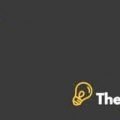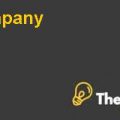Trader Joe’s Case Study Analysis
Competitive positioning:
Trader Joe’s:
The second-best supermarket operated in about 400 different locations in the United States. It is known to carry out 50,000 SKUs with an approximate annual sales of about $10 billion.
Whole Foods Market:
The leading retailer of natural and organic foods operates no less than 330 store locations in the US, UK, and Canada. Such locations are known to carry out an approximate of 21000 stock-keeping units. In 2012, it demonstrated the growth of same-store sales by 8.4 percent.
Dollar General:
The leading operator of small discount stores – Dollar General offers its services in about 10,000 locations in 40 states. It is known to carry about 10,000 SKU supported by a 4.7 percent growth of same-store sales in 2012.
Wal-Mart:
The largest retailer of grocery in the United States – Wal-Mart mainly operated more than 3000 supercentres. It is known to carry out about 100,000 SKUs leading to increased sales of approximately $100 billion.
PEST analysis:
Political:
Due to the effective tax rate of a corporation in the United States i.e. no less than 12 percent to the highly profitable organization(O'Toole, 2013), Tesco withdrew from the US market whereas British retailers experienced a loss of about $1.8 billion. Thus, the political condition of the US is considered to be unfavorable for extensive growth.
Economic:
The retail industry of the United States demonstrated a significant decline in sales to 51 percent. A decline in sales is known to influence the GDP growth of the country supported by the change in inflation rate and change in the dynamics of consumer sentiments.
Social:
An increased consumer brand loyalty supports the probability of increased future sales by Trader Joe’s based on low-priced and privately labeled products. There is a requirement to expand the product portfolio i.e. the inclusion of baby boomers to effectively the consumer demand.
Technological:
Due to the use of advanced use of technological approaches in the retail industry by the leading organization, there is a requirement to invest in research and development to align the business operations with the change in industry dynamics.
Recommendation:
Considering the analysis of the business operation and the sales growth, the organization is recommended to involve in social media marketing to bring significant improvement in communication with potential customers. Secondly, there is a requirement of implementing a differentiation strategic approach i.e. shift from e-commerce retail through building physical stores to provide a WOW shopping experience to the customers. Although Trader Joe’s enjoys consumer loyalty towards its brand and sales with increased competition in the retail industry investment in the development of new technological approaches is crucial.
Conclusion:
Trader Joe’s mainly dealt with the sales of natural and organic products by offering private label items. Trader Joe’s enjoys consumer loyalty towards its brand and sales. Due to increased competition, the presence of the four largest grocers: Wal-Mart, Kroger, Safeway, Supervalu, and other leading competitive grocers,Trader Joe’s is recommended to involve in social media, build physical stores, and invest in technology. This is primarily required to remain competitive in the retail industry through efficient management of its business operations.................................
This is just a sample partical work. Please place the order on the website to get your own originally done case solution.








